You can hardly get a perfect lawn without perfect maintenance. A flat green yard is the result of systematic and hard work. This article will show you what steps every gardener should take to maintain a healthy and beautiful yard.
Contents
Basic Steps
Like any other plant, lawn grass requires close attention and constant care despite its seeming simplicity and minimalism. It is important to know what to do and when to do it. So, for example, few gardeners know that after winter, the yard should be leveled. If you do not have the right tool for it, you can find recommendations at bumpercroptimes.com. In addition to lawn leveling, your basic routine should include the following steps:
- Mowing;
- Watering;
- Fertilizing;
- Weed removal;
- Aeration and scarification;
- Repairing (reseeding and leveling);
- Disease treatment.
All of these actions are aimed at maintaining your lawn health. It is an integrated approach that provides you with the perfect backyard and eliminates many problems like diseases and bald patches. Read more about each step below.
1. Mowing
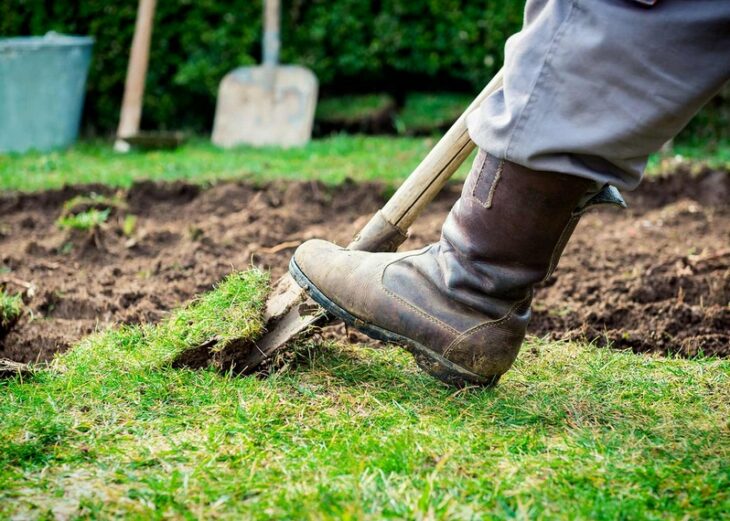
Source: lovethegarden.com
Grass mowing is at the top of this list for a reason. Although it seems simple, the lawn appearance depends on the correct implementation and regularity. According to the plants’ variety and the lawn purpose, the grass should be kept around 2-3 inches high and cut when it reaches 4 inches.
During a heavy rainfall period, the lawn is usually mowed once every 5 days, in dry weather once every 7-12 days. It is best to trim the grass a little at a time, no more than one-third of a plant. Do not think that if you cut it shorter, you can do long intervals between treatments. It can adversely affect the grass’s health and appearance due to the rapid depletion of the soil.
2. Watering
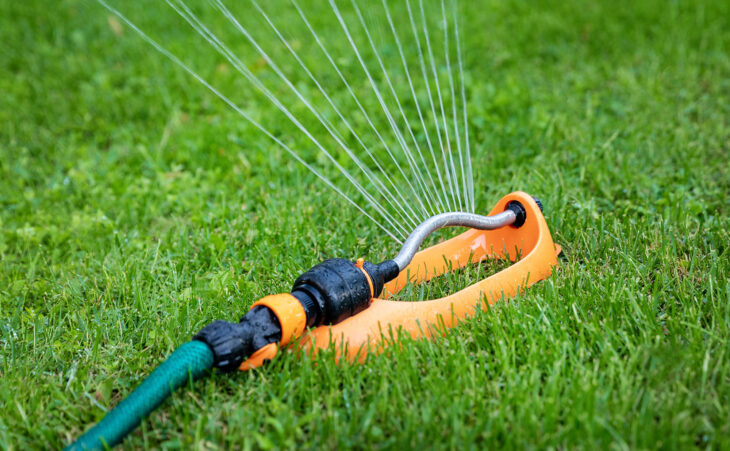
Source: rainbowlawncare.com
Watering frequency depends on the weather and site location. In shady areas, the lawn can be watered less often, in those in direct sunlight, respectively, more often. On average, the grass needs watering every 2-10 days. It is best to do it in the evening; then, the liquid will have time to be completely absorbed before bright sunlight appears.
Achieving uniform and gradual hydration is essential; therefore, professionals recommend opting for a drip system instead of manual irrigation. In no case should you use a powerful directional jet of water, as it can seriously damage the lawn top layer. In this regard, automatic systems help to achieve the best result using continuous and small-drop irrigation.
3. Fertilization
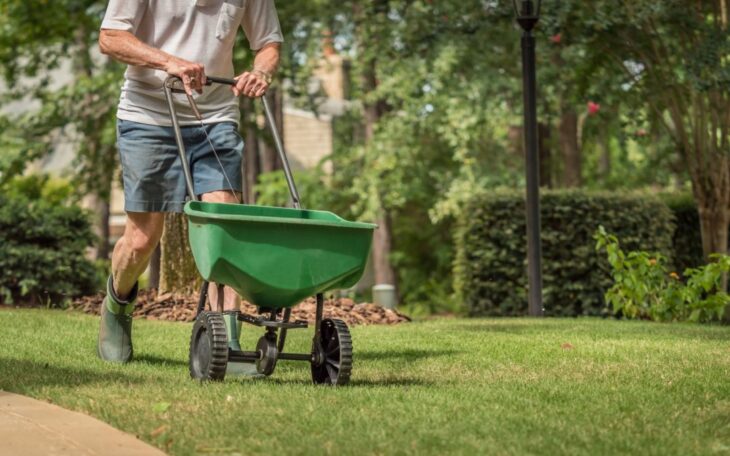
Source: ltdlawn.com
Nutrients from the turf are constantly drawn by plants, which are trimmed regularly. Without timely fertilization, the lawn becomes weak, leading to its yellowing and weed appearance. Usually, fertilizers should be used 2-3 times a year or more often if necessary. It is crucial to distribute the chemicals properly; otherwise, they may burn leaves. It is recommended to water the lawn the day before and two days after the application.
In the spring, lawn grass is usually deficient in nitrogen. Fertilizers with a high content of this macronutrient contribute to the abundant growth of greens. Using nitrogen products will help you get a green carpet faster. In summer, complex fertilizers labeled NPK (nitrogen, phosphorus, and potassium) should be applied. They have a positive effect on a plant as a whole. In the fall, to nourish the grass and prepare it for winter, use phosphate-potassium remedies, which strengthen the root system of the grass.
4. Weed Removal
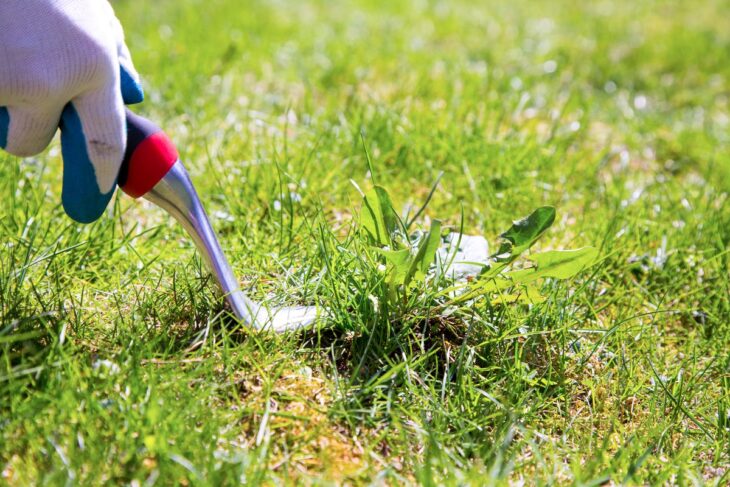
Source: thisoldhouse.com
Weeds not only spoil the look of your lawn but also take nutrients from the soil. Sometimes the fertilizing procedure is combined with herbicide treatment; the use of pre-emergent agents is especially effective. Directional chemicals inhibit only broadleaf plants, minimally affecting lawn grass. A mechanical method with hand tools is suitable for removing single weeds.
5. Aeration and Scarification
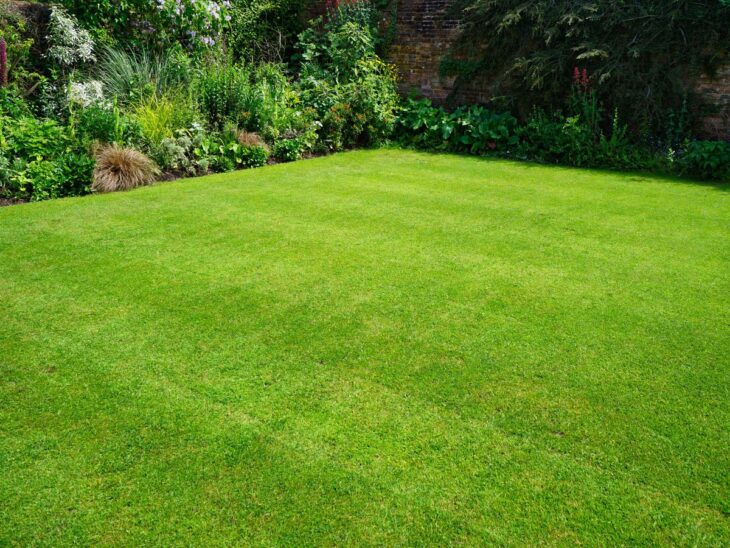
Source: thisoldhouse.com
Aeration and scarification are considered optional in the care routine by inexperienced gardeners. However, their regular implementation has a positive effect on lawn health. Aeration aims to provide the grass and soil with oxygen. For it, you can use conventional pitchforks, aerator shoes, or special equipment. Do it in these cases:
- Drought. Pitchfork thorns pierce the upper solid layer of the soil and facilitate the flow of water to root systems;
- Heavy rains. Air penetrating during aeration dries out the ground and eliminates the threat of rotting;
- Trampled lawn. Too dense, compressed soil interferes with the water ingress to the roots and slows the plant development.
Scarification can be combined with aeration and carried out one procedure after another. A scarifier allows you to gently remove weeds, moss, and old grass from the lawn. In the spring, this procedure helps reduce the number of weeds, and in the fall, it prevents the grass from pressing under the snow.
6. Repair
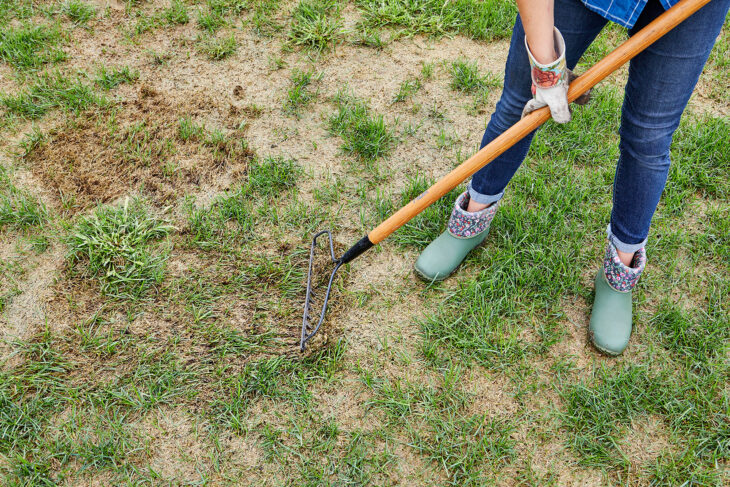
Source: bhg.com
Periodically, the lawn may need spot cosmetic repairs. In some places, pits, depressions, trampled or burnt areas may appear. On such sites, you should pour fertile soil and plant new grass. In especially severe cases, the upper soil layer can be replaced. If bumps and peaks have formed on the lawn, level them using a special rake.
Together with these actions, it is necessary to establish and eliminate the very cause of the problem. It may be required to move the footpath, make adjustments to the drainage system, or change the composition of the grass mixture. If all the rules for laying a lawn are observed, such problems become rare, and there is no need for repairs.
7. Disease Treatment
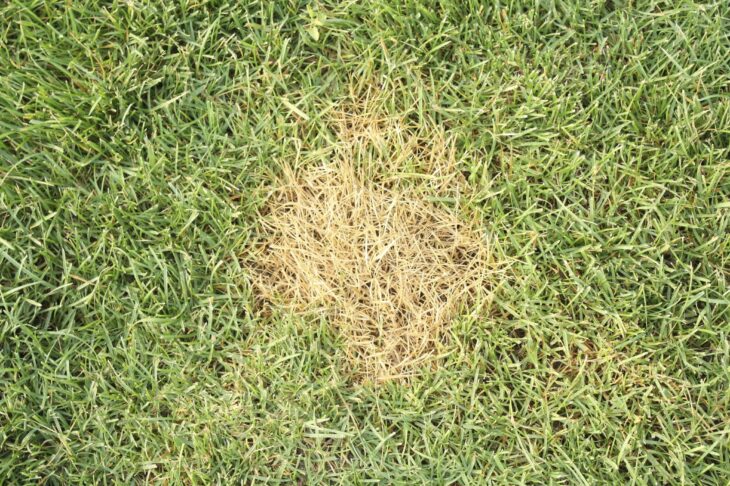
Source: gardeningknowhow.com
Sometimes it happens that despite your best efforts, your grass gets sick. There is nothing critical in it; the main thing is to take the necessary measures on time. If you find an area with a darkened or whitish bloom, it is likely a fungal infection. Treat the place with a fungicide to keep the disease from spreading further. It is possible to use drastic measures in some cases: completely remove the affected area of grass and the ground top layer, fill it with healthy soil, and plant seeds.
Lawn Beauty and Health Are at Your Fingertips
Often, the lawn is not only of functional importance but also intended to be a decoration of the backyard. To keep the grass permanently green, follow the steps above and adjust the care routine based on the needs of your plants. As a reward for your efforts, you will receive the perfect lawn.
